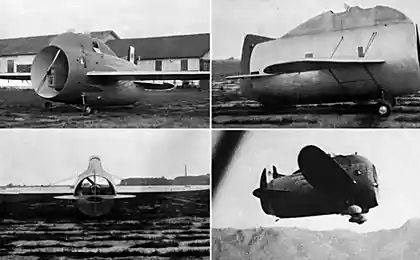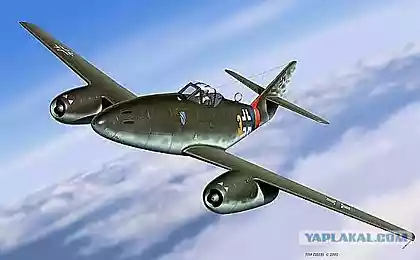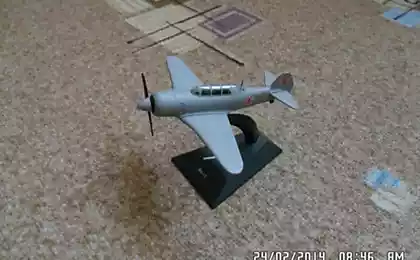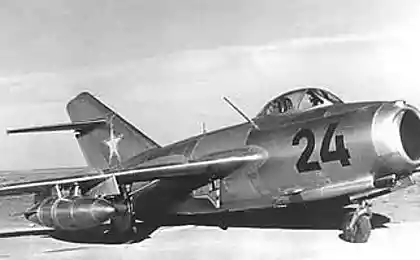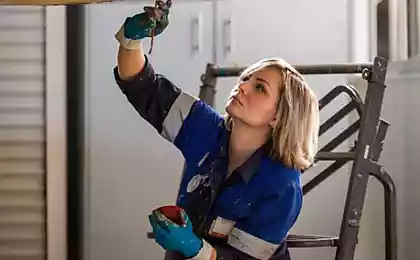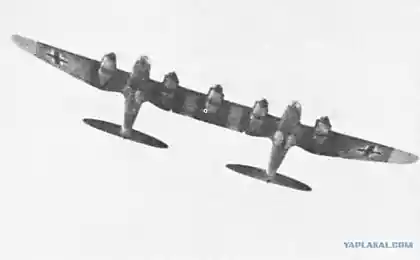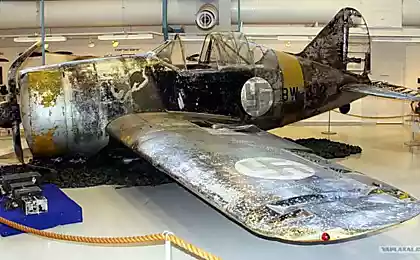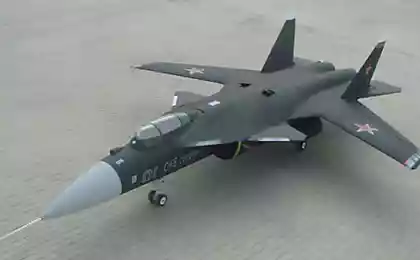1072
Air conditioning system, or why earache in flight
You breathe air sampled straight from the womb of the hot engine. The air is taken from aircraft engines for various needs: heating of certain surfaces (not to naros tal ice on the wings, for example), creating the desired pressure in the cabin, air conditioning in the cabin (the flow of oxygen to breathe).
Bleed air has a temperature of up to 500 degrees Celsius! It is this air we breathe in the air. Of course it goes through several stages of cooling.

Most of the work on the preparation of the air is performed just conditioning installation (Air Conditioning Packs), so about those same packs (Cherubic Hymn) I am now a little show and tell.
Packs are usually found under the cabin, near the center section. Here we just open stvorochku:
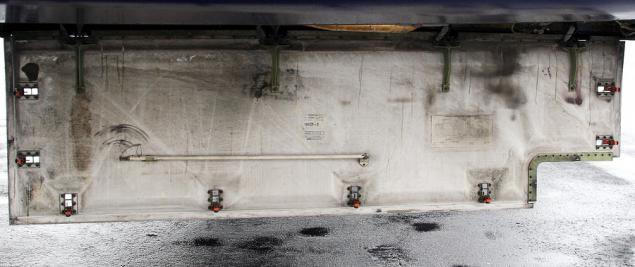
We see there is something like this:
two healthy rectangular heat exchanger (air-to-air radiator = WWR) silver
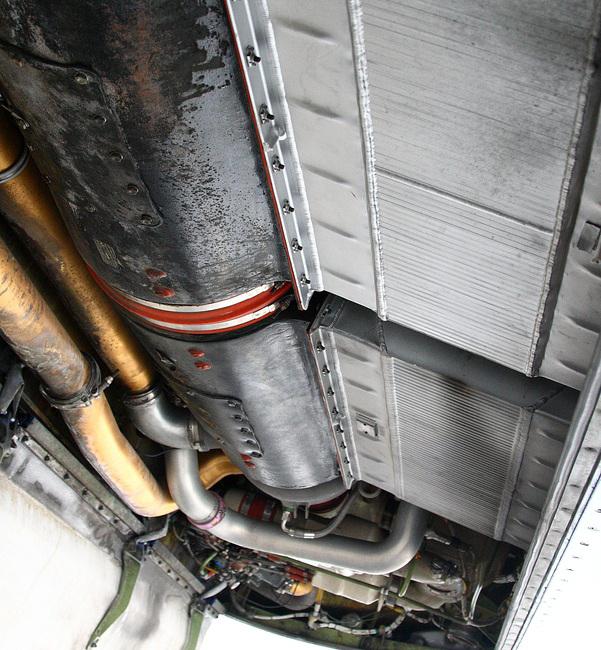
left - black plastic housings for prososa air through VVRy, and many pipes.
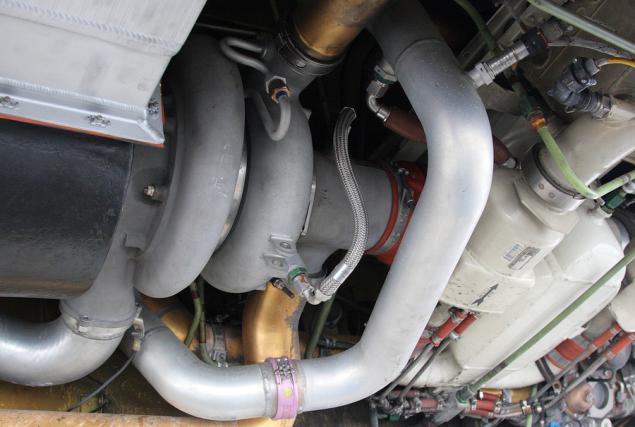
Now here's the thing.
Air system is taken from the compressor APU or from the engine compressor (if running).
There it is very hot - hundreds of degrees. If we lived only in the winter, then it would have been easier - it would have cooled, and applied to the salon.
But after all, we are very positive and the temperature at which you want to shop is not that not much to heat and cool, and very.
Therefore, we need to fuck SLE refrigerator nonweak such performance (Salon 170 hot guys - huh?), Moreover, it is desirable to make it work without outsourcing like electricity.
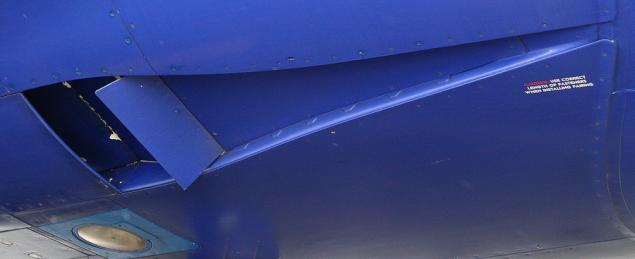
And this thing called "turbo-cooler" (in English use the term Air Cycle Machine = ACM). Here it is a little gray left of center:
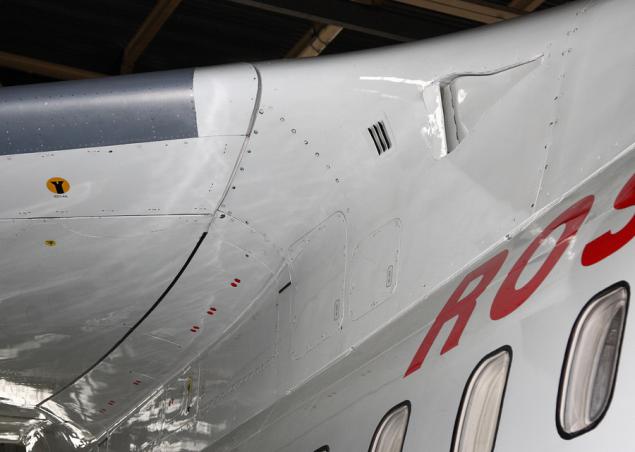
It formerly hot air (and now slightly cooled already in the VVR), but still under pressure, performs work on the rotation of the turbine, and thus expands and cools.
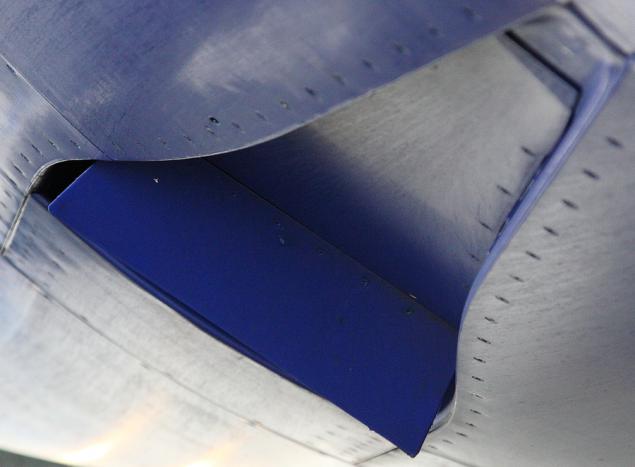
A little more detail.
Here's a clever form of air intake has almost all aircraft:
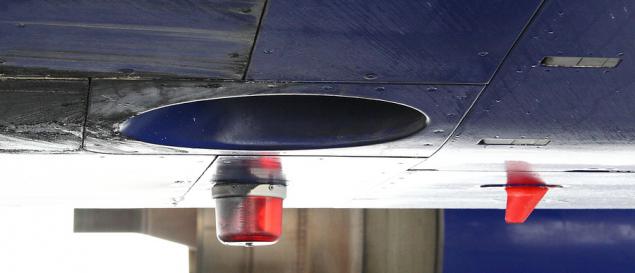
Through the intake air to the air blowing air radiators. According to this characteristic form can immediately understand where the aircraft are air conditioning packs.
Most aircraft are below the center-packs.
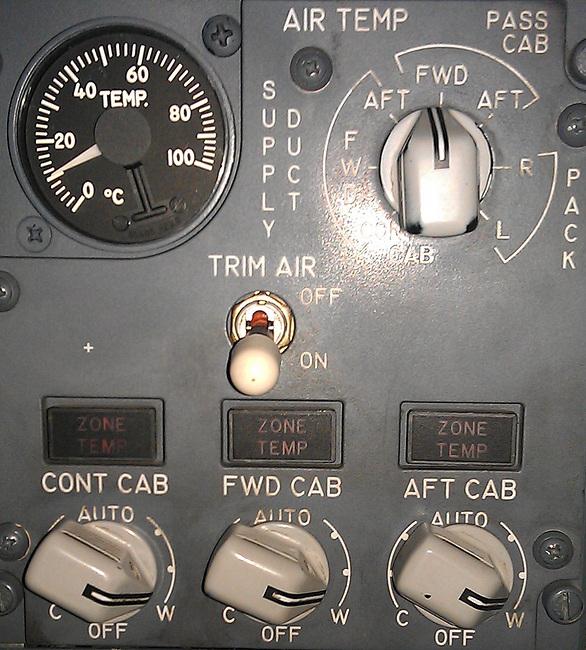
And here at the An-148 - top:
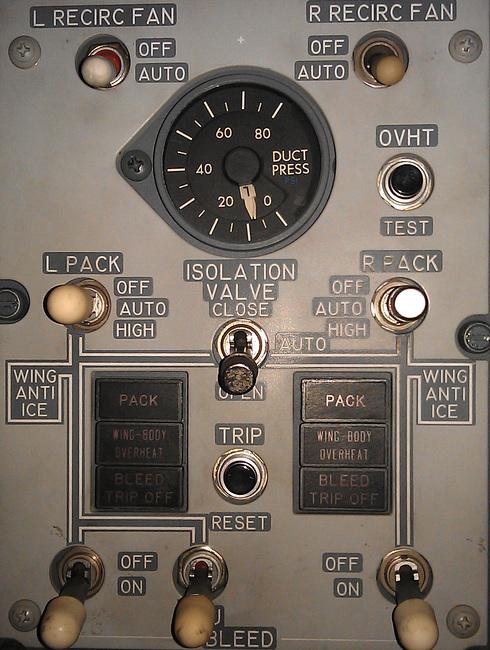
(Air intake - at the top right photo)
Well, even some of the originals they are in the nose.
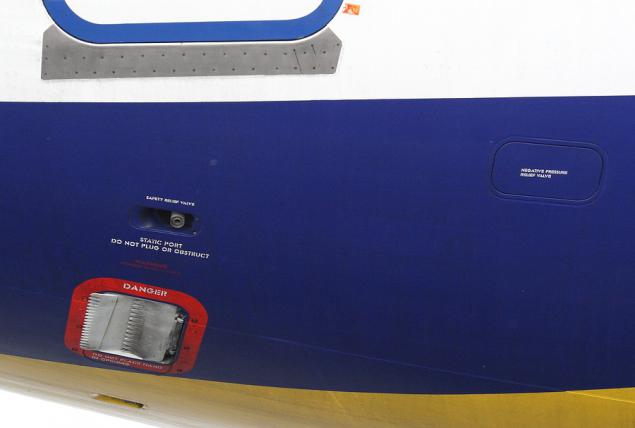
Orifice inlet duct is regulated. 737 - movable wall of the entrance channel to the side of the fuselage.
This is regulated by cooling VVR - because at the height of the incoming flow is very cold (-60 ° C) and high-speed, so stvorochku better cover.
It found that fewer nasties sucked from the surface and gets on the run - because the fuselage at 737 sits pretty low.
At Airbus vhodniki are much higher, and there is no such boards.
A characteristic feature of the 737 is the presence of the shield in front of the intake passage:
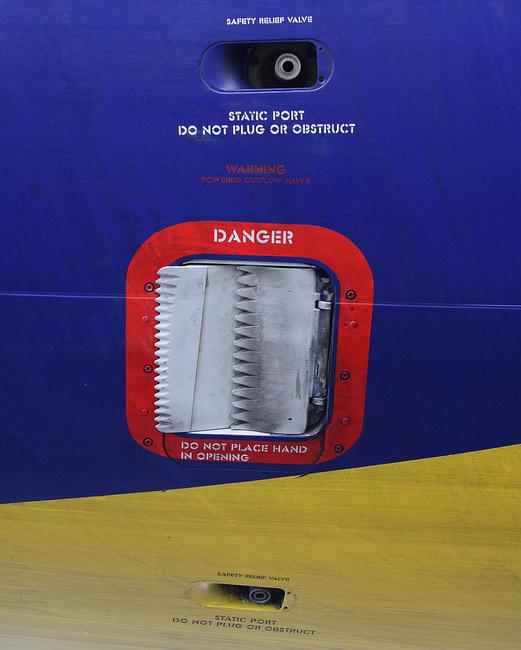
Between the puck and niche chassis, bottom, is an outlet for purging air:
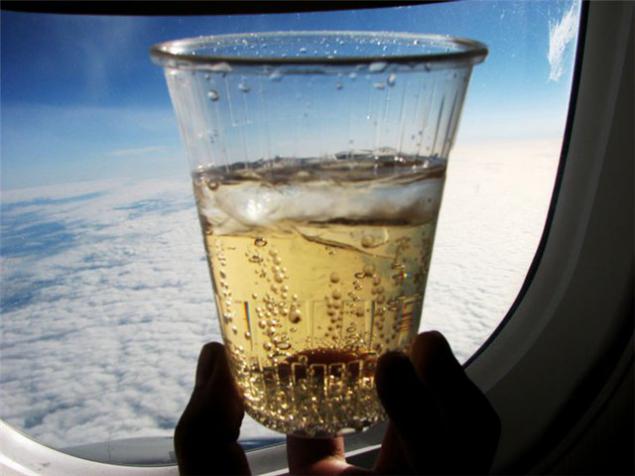
From there, blowing slightly warm, and in winter there can be more interesting than around.
--img14--
Tak-air with ... we cooled with grief in half.
Now how would poregulirovat and generally in the heat.
--img15--
Temperature adjustment is made podmeshivaeniem hot to cold air.
737-800 on all pressurized fuselage is divided into three zones: cockpit, front and rear of the passenger compartment. Same three valves and mixed into hot to.
Accordingly, in the cockpit, on the overhead panel, there are three setting temperature (here they are below the pictures):
--img16--
Above them are indicators of failure of the respective channels controlling equipment.
Even higher - switch mixing of hot air.
Top left - a device for controlling the air temperature in the lines and in the cabin.
Top right - switch to select and what, in fact, the temperature will be watching.
In case of refusal air temperature control packs themselves move to the issuance of any kind of mean temperature 24 degrees.
--img17--
To poekonomit air, recirculation fans typically operate air in the passenger cabin.
Here are their switches just sat on the adjacent panel on top:
--img18--
The fans suck air from the cabin through the side lower panel, then he cleaned filters and mixed with the fresh air of the packs.
Air as the cockpit is always served only fresh.
The following switches in the middle, visible device indicating the air pressure in the lines.
Under it - the toggle valve ringing the left and right air lines. As can be seen, the air from each engine is supplied to its packing, and APU is connected to the left line.
On either side of him - toggle switching packs.
Below - signal board faults of different parts of the system for air preparation.
And at the very bottom - the inclusion of bleed air from the APU and engine.
--img19--
Regulation of the pressure inside the cabin made automatic regulating bleed air through the exhaust valve.
It is located on the right rear of the aircraft, approximately at the rear right door (red circled column):
--img20--
The valve consists of two flaps which can be driven by three different motors (to reserve in case of failure).
--img21--
The case when it's bad at all, provided two more absolutely pure mechanical emergency valve opening above a certain pressure inside the fuselage relative to seawater.
These valves upstream and downstream of the exhaust valve:
--img22--
Typically, air-conditioning system is combined with a pressure regulation system. What is it? We can consider the example of a balloon: if the ball inflating, then sooner or later it will burst. Therefore it is necessary that the air etched. Pressure control system closes or opens the outlet, maintaining the pressure in the cabin and given constant.
--img23--
What is the difference in pressure? Behind at an altitude of 10km pressure is too low, to an untrained person could carry out its vital functions. It is certain death. Therefore, the cabin has to "inflate". Of strength conditions (too much pressure difference can not sustain the aircraft fuselage) and comfortable human life, the pressure in the cabin falls minimally (height in the cabin rises) to 3-4 km. This is certainly not the same as on earth, but not 10 km.
--img24--
Pressure is gently lowered, as the climb up to the limit 3-4km. And then, just as smoothly increases with decrease and approach. That is why we feel with our ears, as pressure changes. Sometimes these feelings can be quite painful, sometimes it is not felt.
Just at the moment when we dramatically increase the operation of the motor, goes into more air (until the load machine, which will cover the air supply). At this point, too, can feel the sharp fluctuations in pressure inside the aircraft.
--img25--
That is why, ear pain does not depend on the type of aircraft, and to a greater extent on the configuration of automation and less pilots))
On the grounds lx-photos.livejournal.com
--img26--
Bleed air has a temperature of up to 500 degrees Celsius! It is this air we breathe in the air. Of course it goes through several stages of cooling.

Most of the work on the preparation of the air is performed just conditioning installation (Air Conditioning Packs), so about those same packs (Cherubic Hymn) I am now a little show and tell.
Packs are usually found under the cabin, near the center section. Here we just open stvorochku:

We see there is something like this:
two healthy rectangular heat exchanger (air-to-air radiator = WWR) silver

left - black plastic housings for prososa air through VVRy, and many pipes.

Now here's the thing.
Air system is taken from the compressor APU or from the engine compressor (if running).
There it is very hot - hundreds of degrees. If we lived only in the winter, then it would have been easier - it would have cooled, and applied to the salon.
But after all, we are very positive and the temperature at which you want to shop is not that not much to heat and cool, and very.
Therefore, we need to fuck SLE refrigerator nonweak such performance (Salon 170 hot guys - huh?), Moreover, it is desirable to make it work without outsourcing like electricity.

And this thing called "turbo-cooler" (in English use the term Air Cycle Machine = ACM). Here it is a little gray left of center:

It formerly hot air (and now slightly cooled already in the VVR), but still under pressure, performs work on the rotation of the turbine, and thus expands and cools.

A little more detail.
Here's a clever form of air intake has almost all aircraft:

Through the intake air to the air blowing air radiators. According to this characteristic form can immediately understand where the aircraft are air conditioning packs.
Most aircraft are below the center-packs.

And here at the An-148 - top:

(Air intake - at the top right photo)
Well, even some of the originals they are in the nose.

Orifice inlet duct is regulated. 737 - movable wall of the entrance channel to the side of the fuselage.
This is regulated by cooling VVR - because at the height of the incoming flow is very cold (-60 ° C) and high-speed, so stvorochku better cover.
It found that fewer nasties sucked from the surface and gets on the run - because the fuselage at 737 sits pretty low.
At Airbus vhodniki are much higher, and there is no such boards.
A characteristic feature of the 737 is the presence of the shield in front of the intake passage:

Between the puck and niche chassis, bottom, is an outlet for purging air:

From there, blowing slightly warm, and in winter there can be more interesting than around.
--img14--
Tak-air with ... we cooled with grief in half.
Now how would poregulirovat and generally in the heat.
--img15--
Temperature adjustment is made podmeshivaeniem hot to cold air.
737-800 on all pressurized fuselage is divided into three zones: cockpit, front and rear of the passenger compartment. Same three valves and mixed into hot to.
Accordingly, in the cockpit, on the overhead panel, there are three setting temperature (here they are below the pictures):
--img16--
Above them are indicators of failure of the respective channels controlling equipment.
Even higher - switch mixing of hot air.
Top left - a device for controlling the air temperature in the lines and in the cabin.
Top right - switch to select and what, in fact, the temperature will be watching.
In case of refusal air temperature control packs themselves move to the issuance of any kind of mean temperature 24 degrees.
--img17--
To poekonomit air, recirculation fans typically operate air in the passenger cabin.
Here are their switches just sat on the adjacent panel on top:
--img18--
The fans suck air from the cabin through the side lower panel, then he cleaned filters and mixed with the fresh air of the packs.
Air as the cockpit is always served only fresh.
The following switches in the middle, visible device indicating the air pressure in the lines.
Under it - the toggle valve ringing the left and right air lines. As can be seen, the air from each engine is supplied to its packing, and APU is connected to the left line.
On either side of him - toggle switching packs.
Below - signal board faults of different parts of the system for air preparation.
And at the very bottom - the inclusion of bleed air from the APU and engine.
--img19--
Regulation of the pressure inside the cabin made automatic regulating bleed air through the exhaust valve.
It is located on the right rear of the aircraft, approximately at the rear right door (red circled column):
--img20--
The valve consists of two flaps which can be driven by three different motors (to reserve in case of failure).
--img21--
The case when it's bad at all, provided two more absolutely pure mechanical emergency valve opening above a certain pressure inside the fuselage relative to seawater.
These valves upstream and downstream of the exhaust valve:
--img22--
Typically, air-conditioning system is combined with a pressure regulation system. What is it? We can consider the example of a balloon: if the ball inflating, then sooner or later it will burst. Therefore it is necessary that the air etched. Pressure control system closes or opens the outlet, maintaining the pressure in the cabin and given constant.
--img23--
What is the difference in pressure? Behind at an altitude of 10km pressure is too low, to an untrained person could carry out its vital functions. It is certain death. Therefore, the cabin has to "inflate". Of strength conditions (too much pressure difference can not sustain the aircraft fuselage) and comfortable human life, the pressure in the cabin falls minimally (height in the cabin rises) to 3-4 km. This is certainly not the same as on earth, but not 10 km.
--img24--
Pressure is gently lowered, as the climb up to the limit 3-4km. And then, just as smoothly increases with decrease and approach. That is why we feel with our ears, as pressure changes. Sometimes these feelings can be quite painful, sometimes it is not felt.
Just at the moment when we dramatically increase the operation of the motor, goes into more air (until the load machine, which will cover the air supply). At this point, too, can feel the sharp fluctuations in pressure inside the aircraft.
--img25--
That is why, ear pain does not depend on the type of aircraft, and to a greater extent on the configuration of automation and less pilots))
On the grounds lx-photos.livejournal.com
--img26--
That's what happens when an artist creates a doll, not a machine
About useless programs Battery Saver for Android
